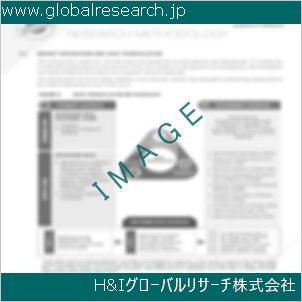Table of Contents
1 Industry Overview of Isophthalicacid
1.1 Definition and Specifications of Isophthalicacid
1.1.1 Definition of Isophthalicacid
1.1.2 Specifications of Isophthalicacid
1.2 Classification of Isophthalicacid
1.3 Applications of Isophthalicacid
1.3.1 Nuclear Application
1.3.2 Non-Nuclear Application
1.4 Industry Chain Structure of Isophthalicacid
1.5 Industry Overview and Major Regions Status of Isophthalicacid
1.5.1 Industry Overview of Isophthalicacid
1.5.2 Global Major Regions Status of Isophthalicacid
1.6 Industry Policy Analysis of Isophthalicacid
1.7 Industry News Analysis of Isophthalicacid
2 Manufacturing Cost Structure Analysis of Isophthalicacid
2.1 Raw Material Suppliers and Price Analysis of Isophthalicacid
2.2 Equipment Suppliers and Price Analysis of Isophthalicacid
2.3 Labor Cost Analysis of Isophthalicacid
2.4 Other Costs Analysis of Isophthalicacid
2.5 Manufacturing Cost Structure Analysis of Isophthalicacid
2.6 Manufacturing Process Analysis of Isophthalicacid
3 Technical Data and Manufacturing Plants Analysis of Isophthalicacid
3.1 Capacity and Commercial Production Date of Global Isophthalicacid Major Manufacturers in 2023
3.2 Manufacturing Plants Distribution of Global Isophthalicacid Major Manufacturers in 2023
3.3 R&D Status and Technology Source of Global Isophthalicacid Major Manufacturers in 2023
3.4 Raw Materials Sources Analysis of Global Isophthalicacid Major Manufacturers in 2023
4 Capacity, Production and Revenue Analysis of Isophthalicacid by Regions, Types and Manufacturers
4.1 Global Capacity, Production and Revenue of Isophthalicacid by Regions 2019-2024
4.2 Global and Major Regions Capacity, Production, Revenue and Growth Rate of Isophthalicacid 2019-2024
4.3 Global Capacity, Production and Revenue of Isophthalicacid by Types 2019-2024
4.4 Global Capacity, Production and Revenue of Isophthalicacid by Manufacturers 2019-2024
5 Price, Cost, Gross and Gross Margin Analysis of Isophthalicacid by Regions, Types and Manufacturers
5.1 Price, Cost, Gross and Gross Margin Analysis of Isophthalicacid by Regions 2019-2024
5.2 Price, Cost, Gross and Gross Margin Analysis of Isophthalicacid by Types 2019-2024
5.3 Price, Cost, Gross and Gross Margin Analysis of Isophthalicacid by Manufacturers 2019-2024
6 Consumption Volume, Consumption Value and Sale Price Analysis of Isophthalicacid by Regions, Types and Applications
6.1 Global Consumption Volume and Consumption Value of Isophthalicacid by Regions 2019-2024
6.2 Global and Major Regions Consumption Volume, Consumption Value and Growth Rate of Isophthalicacid 2019-2024
6.3 Global Consumption Volume and Consumption Value of Isophthalicacid by Types 2019-2024
6.4 Global Consumption Volume and Consumption Value of Isophthalicacid by Applications 2019-2024
6.5 Sale Price of Isophthalicacid by Regions 2019-2024
6.6 Sale Price of Isophthalicacid by Types 2019-2024
6.7 Sale Price of Isophthalicacid by Applications 2019-2024
6.8 Market Share Analysis of Isophthalicacid by Different Sale Price Levels
7 Supply, Import, Export and Consumption Analysis of Isophthalicacid
7.1 Supply, Consumption and Gap of Isophthalicacid 2019-2024
7.2 Global Capacity, Production, Price, Cost, Revenue, Supply, Import, Export and Consumption of Isophthalicacid 2019-2024
7.3 USA Capacity, Production, Price, Cost, Revenue, Supply, Import, Export and Consumption of Isophthalicacid 2019-2024
7.4 EU Capacity, Production, Price, Cost, Revenue, Supply, Import, Export and Consumption of Isophthalicacid 2019-2024
7.5 China Capacity, Production, Price, Cost, Revenue, Supply, Import, Export and Consumption of Isophthalicacid 2019-2024
7.6 Japan Capacity, Production, Price, Cost, Revenue, Supply, Import, Export and Consumption of Isophthalicacid 2019-2024
8 Major Manufacturers Analysis of Isophthalicacid
8.1 Manufacturer One
8.1.1 Company Profile
8.1.2 Product Picture and Specifications
8.1.2.1 Type I
8.1.2.2 Type II
8.1.2.3 Type III
8.1.3 Capacity, Production, Price, Cost, Gross and Revenue
8.1.4 Contact Information
8.2 Manufacturer Two
8.2.1 Company Profile
8.2.2 Product Picture and Specifications
8.2.2.1 Type I
8.2.2.2 Type II
8.2.2.3 Type III
8.2.3 Capacity, Production, Price, Cost, Gross and Revenue
8.2.4 Contact Information
8.3 Manufacturer Three
8.3.1 Company Profile
8.3.2 Product Picture and Specifications
8.3.2.1 Type I
8.3.2.2 Type II
8.3.2.3 Type III
8.3.3 Capacity, Production, Price, Cost, Gross and Revenue
8.3.4 Contact Information
8.4 Manufacturer Four
8.4.1 Company Profile
8.4.2 Product Picture and Specifications
8.4.2.1 Type I
8.4.2.2 Type II
8.4.2.3 Type III
8.4.3 Capacity, Production, Price, Cost, Gross and Revenue
8.4.4 Contact Information
8.5 Manufacturer Five
8.5.1 Company Profile
8.5.2 Product Picture and Specifications
8.5.2.1 Type I
8.5.2.2 Type II
8.5.2.3 Type III
8.5.3 Capacity, Production, Price, Cost, Gross and Revenue
8.5.4 Contact Information
…
9 Marketing Trader or Distributor Analysis of Isophthalicacid
9.1 Marketing Channels Status of Isophthalicacid
9.2 Traders or Distributors with Contact Information of Isophthalicacid by Regions
9.3 Ex-work Price, Channel Price and End Buyer Price Analysis of Isophthalicacid
9.4 Regional Import, Export and Trade Analysis of Isophthalicacid
10 Industry Chain Analysis of Isophthalicacid
10.1 Upstream Major Raw Materials Suppliers Analysis of Isophthalicacid
10.1.1 Major Raw Materials Suppliers with Contact Information Analysis of Isophthalicacid
10.1.2 Major Raw Materials Suppliers with Supply Volume Analysis of Isophthalicacid by Regions
10.2 Upstream Major Equipment Suppliers Analysis of Isophthalicacid
10.2.1 Major Equipment Suppliers with Contact Information Analysis of Isophthalicacid
10.2.2 Major Equipment Suppliers with Product Pictures Analysis of Isophthalicacid by Regions
10.3 Downstream Major Consumers Analysis of Isophthalicacid
10.3.1 Major Consumers with Contact Information Analysis of Isophthalicacid
10.3.2 Major Consumers with Consumption Volume Analysis of Isophthalicacid by Regions
10.4 Supply Chain Relationship Analysis of Isophthalicacid
11 Development Trend of Analysis of Isophthalicacid
11.1 Capacity, Production and Revenue Forecast of Isophthalicacid by Regions and Types
11.1.1 Global Capacity, Production and Revenue of Isophthalicacid by Regions 2024-2029
11.1.2 Global and Major Regions Capacity, Production, Revenue and Growth Rate of Isophthalicacid 2024-2029
11.1.3 Global Capacity, Production and Revenue of Isophthalicacid by Types 2024-2029
11.2 Consumption Volume and Consumption Value Forecast of Isophthalicacid by Regions, Types and Applications
11.2.1 Global Consumption Volume and Consumption Value of Isophthalicacid by Regions 2024-2029
11.2.2 Global and Major Regions Consumption Volume, Consumption Value and Growth Rate of Isophthalicacid 2024-2029
11.2.3 Global Consumption Volume and Consumption Value of Isophthalicacid by Types 2024-2029
11.2.4 Global Consumption Volume and Consumption Value of Isophthalicacid by Applications 2024-2029
11.3 Supply, Import, Export and Consumption Forecast of Isophthalicacid
11.3.1 Supply, Consumption and Gap of Isophthalicacid 2024-2029
11.3.2 Global Capacity, Production, Price, Cost, Revenue, Supply, Import, Export and Consumption of Isophthalicacid 2024-2029
11.3.3 USA Capacity, Production, Price, Cost, Revenue, Supply, Import, Export and Consumption of Isophthalicacid 2024-2029
11.3.4 EU Capacity, Production, Price, Cost, Revenue, Supply, Import, Export and Consumption of Isophthalicacid 2024-2029
11.3.5 China Capacity, Production, Price, Cost, Revenue, Supply, Import, Export and Consumption of Isophthalicacid 2024-2029
11.3.6 Japan Capacity, Production, Price, Cost, Revenue, Supply, Import, Export and Consumption of Isophthalicacid 2024-2029
12 New Project Investment Feasibility Analysis of Isophthalicacid
12.1 New Project SWOT Analysis of Isophthalicacid
12.2 New Project Investment Feasibility Analysis of Isophthalicacid
13 Conclusion of the Global Isophthalicacid (CAS 121-91-5) Industry 2024 Market Research Report
| ※参考情報 イソフタル酸(Isophthalic acid)は、化学式 C8H6O4 を持つ有機化合物で、CAS番号は 121-91-5 です。イソフタル酸は、芳香族カルボン酸の一つであり、特に工業用途において重要な役割を果たしています。以下に、イソフタル酸の定義、特徴、種類、用途、関連技術について詳しく述べます。 イソフタル酸は、パラフタル酸やテレフタル酸と並ぶ重要な芳香族カルボン酸です。この化合物は、ベンゼン環に2つのカルボキシル基(-COOH)が付加した構造を持っています。イソフタル酸の特性は、その分子内のジカルボン酸の構造から得られる物理的および化学的な性質に基づいています。 イソフタル酸の特徴として、まずその融点と沸点があります。イソフタル酸は、比較的高い融点(約 350℃)を持つため、熱に対する耐性が求められる用途に適しています。また、常温では無色または白色の結晶性固体として存在し、水にはわずかに溶けるものの、有機溶剤にはよく溶けるという特徴があります。これは、イソフタル酸を有機合成や高分子材料の製造に利用する際の利点となります。 イソフタル酸には、主に二つのタイプがあります。 一つは、イソフタル酸単体での利用、もう一つは、他の物質と組み合わせて合成されるものです。特に、ポリエステルの原料として利用されることが多く、テレフタル酸と組み合わせて製造されるポリエステルフィラメントや樹脂において、その役割は重要です。これにより、軽量で強度が高く、耐腐食性に優れた材料が得られます。 イソフタル酸の用途は非常に広範であり、特にプラスチック加工業や繊維産業においてその需要が高くなっています。例えば、ポリエステル繊維の製造において、イソフタル酸は耐熱性を向上させるための添加剤として用いられます。また、樹脂に関しては、フィルムやコーティング材料としても広く使用され、優れた耐久性と透明性を提供します。これらの特性により、イソフタル酸を含むポリエステル樹脂は、家電製品や自動車部品、建築材料などの重要な構成要素として広く利用されています。 最近では、環境意識の高まりに伴い、リサイクル可能な材料としてのイソフタル酸の使用も注目されています。特に、再生可能な資源から得られるバイオ由来のイソフタル酸が、今後の持続可能な材料開発に貢献すると期待されています。このように、イソフタル酸はただの合成化合物ではなく、環境への配慮の中で新たな可能性を模索している点が特徴的です。 イソフタル酸に関連する技術には、主に合成技術と加工技術があります。イソフタル酸は、主にナフタレンからの製造されることが多く、ナフタレンの酸化反応を通じて得られます。また、電気化学的な合成やバイオテクノロジーを用いた合成方法も開発されており、これによりより効率的かつ環境に優しいプロセスが研究されています。たとえば、特定の微生物を利用してイソフタル酸を生産する方法が検討されており、将来的には商業化の可能性もあります。 また、高分子加工技術も重要な関連技術です。ポリエステル材料を成形や加工するための技術は、イソフタル酸の特性を最大限に引き出すために不可欠です。例えば、射出成形や押出成形などの技術を使用することで、異なる形状や用途に適した製品を製造することが可能になります。これらの技術革新によって、イソフタル酸を活用した製品の多様性はますます広がっています。 イソフタル酸は、化学的な特性、環境への配慮、工業的な応用等、多くの側面から重要な化合物であると言えます。今後の研究が進むことで、さらなる新しい応用や製造方法が開発されることが期待され、その結果、持続可能な社会の実現に向けて貢献することができるでしょう。イソフタル酸は、その多様な特性と用途から、今後も化学産業においてなくてはならない存在となると考えられます。 |
❖ 免責事項 ❖
http://www.globalresearch.jp/disclaimer












